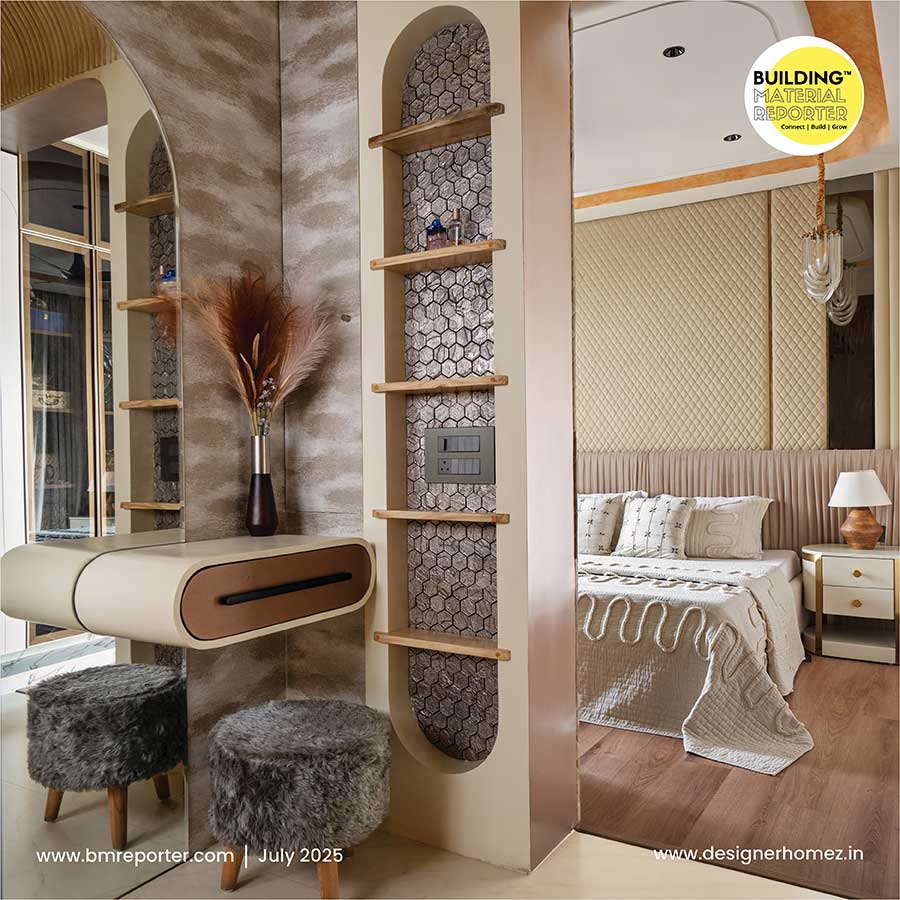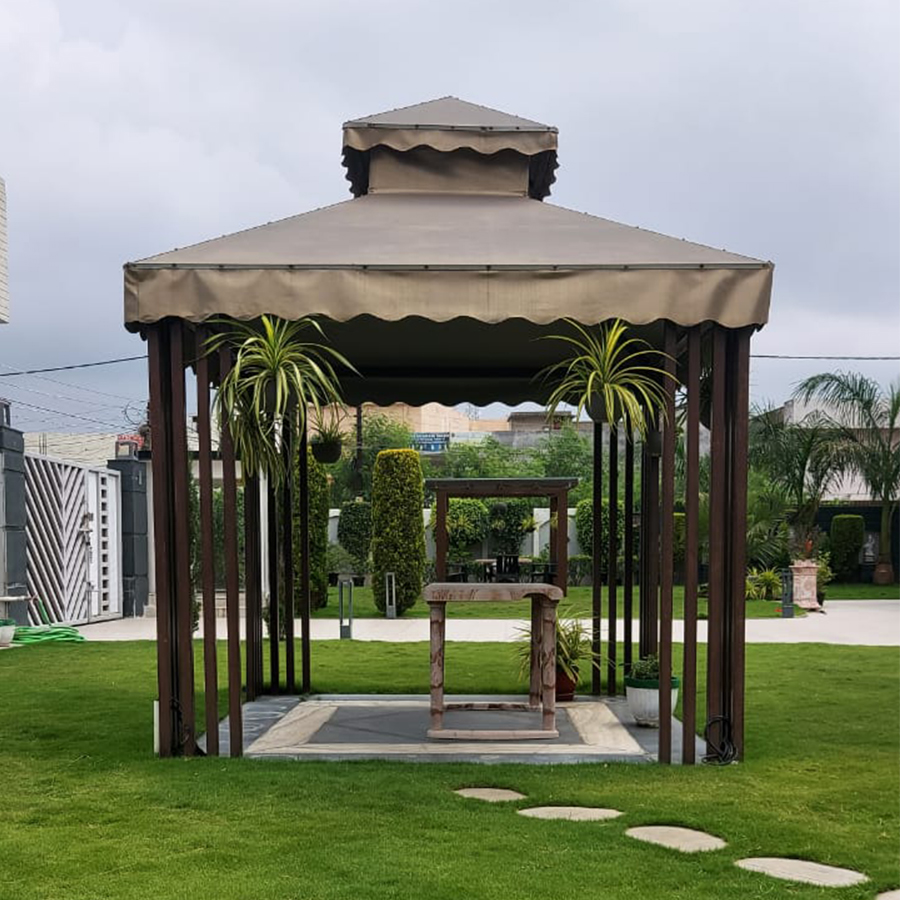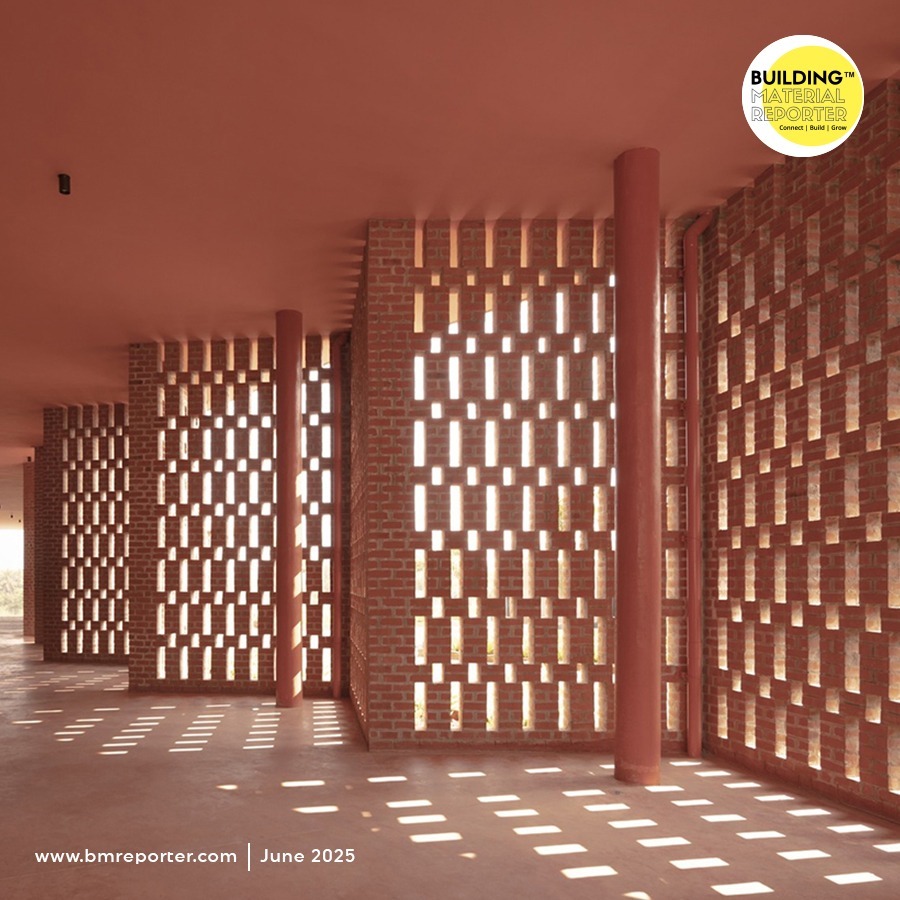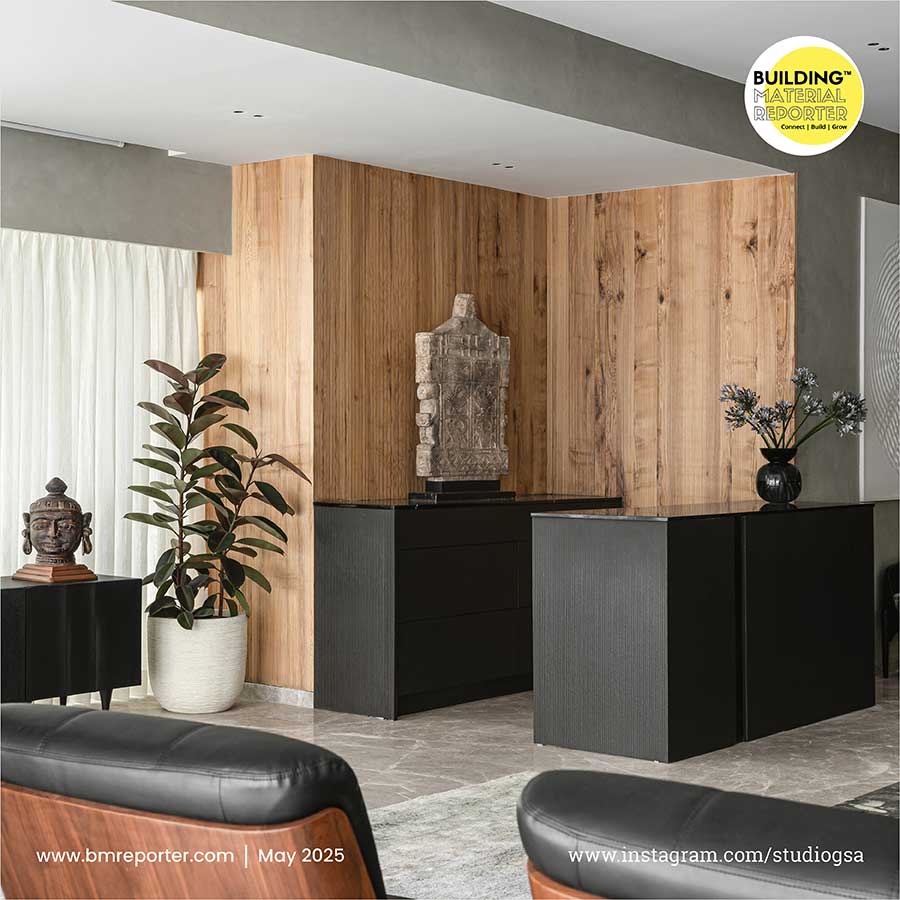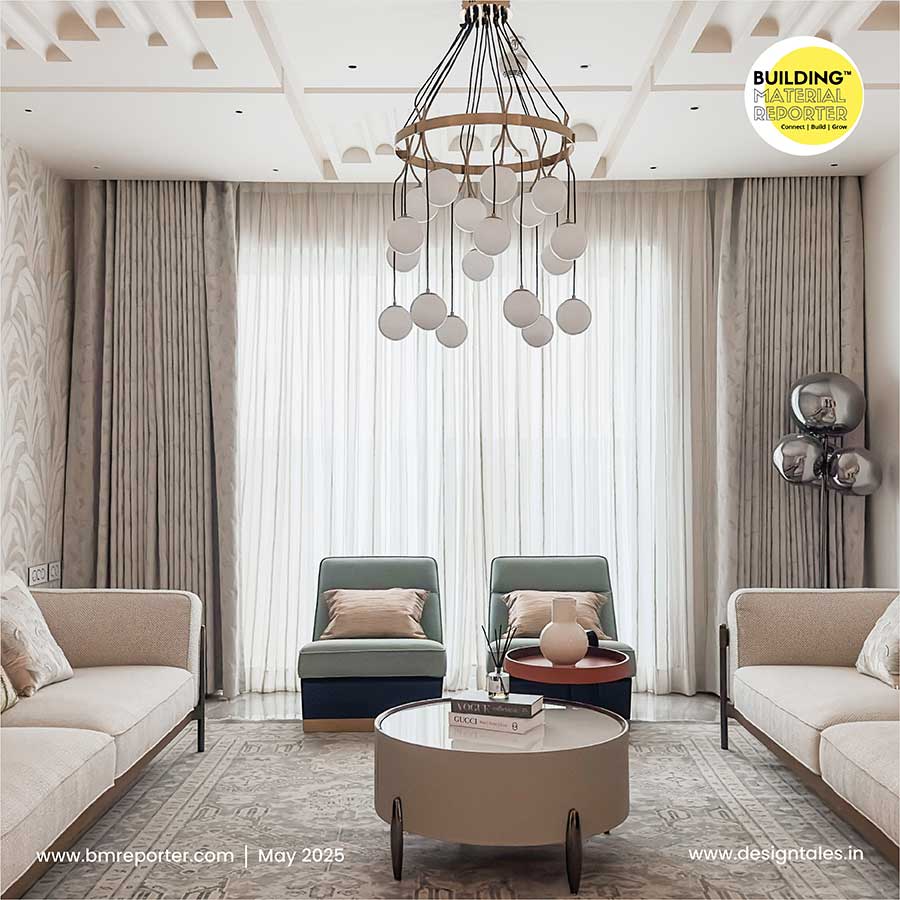Timber Rhyme: Carpentry Skills Meet Technology
- April 12, 2024
- By: Priyanshi Shah
- INFLUENCERS
Due to shifts in time and new engineered materials, the dialogue between a carpenter and a product has perished. The design by Ar. Badrinath Kaleru and Ar. Prerna Kaleru explored conventional limitations of the materials sold by the client, veneers and plywood, and its protagonist role in a conversation that existed in the ancient past. The key idea is a by-product of this concern, an elemental ribbon that can be the subject of a conversation while being a facilitator of the same, a converse.
Timber Rhyme occupies the first storey of a retail shop in a market complex, in Chandigarh. Out of a thin, workable skin of plywood 61 linear feet, ranging in width from 9 inches to 8 feet, the challenge for Studio Ardete was to invite a walk through the existing 71' by 18' linear block as one enters from the rear end.
In design, a single window that frames outside triggers an innate attraction to prospect and sitting space that plays on one's inclination to take refuge. Both placed opposite to ingress initiate a desire to walk. Represented through the ribbon that pours itself into space, 'variety in a unified continuum' nourishes the concept. The project hopes to create an opportunity to re-imagine the craft of the traditional curves as an inexhaustible source of inspiration for the next generation of torchbearers of intricate carvings.
As the ribbon was developed, the site was converted into a spatial matrix by selecting a series of spatial coordinates joined together to formulate doubly curved solids. This facilitates segmentation of the space, where the eye meets varying focal points, each at a different elevation than the previous.
The ribbon is envisioned to blur the boundaries between the static, the movable, and the art in and on these components of the built space. The role of static elements like partition screens is obfuscated with that of movable furniture.
Propounding as a functional art space, a series of 'wooden ribbons' twist and turn to form the display shelves, sitting spaces, meeting tables, and other design elements, each flowing into the other. This transcends the interior into an Art-landscape.
These 'elastic geometries' were realized to be almost self-supporting, threaded from the ceiling using black metal bars. For additional support, translucent acrylic supports were given where the ribbon would be subject to the heavy load.
The ribbon is manifested as a framework of plywood ribs that were digitally fabricated. To interpolate the doubly curved geometries, these were subdivided into a network of plywood ribs in x and y directions, interlocking at 6-inch intervals thereby forming a waffle structure that served as the main framework giving the final shape. To form the structure, individual components were cut from 19mm thick plywood ribs besides 3mm thick flexi-ply, and 1.5 mm thick paper veneer was used to extract a thin, workable skin of plywood 61 linear feet, ranging in width from 9 inches to 8 feet.
The end detail lies in the finishing of the ribs where carpentry skill meets technology. Each flexi-ply joint was filled with wood filler and sanded as required. It is through this last stage of processing that the carpenter takes ownership of technology and uses his experience and 'tell-tale knowledge' for a finished structure. Lastly, he pastes strips of paper veneer perpendicular to the curvature of the structure, blurring different components of the whole.
The light oak veneer was chosen for its soft grain, drawing attention to other materials while acting as background noise to put materials against each other. This evolved the other half of the name as 'rhyme', an uncertain noise and whispering in ears, subconsciously picked up by the soul but almost always unaware by the mind.
This amalgamation of technology for cost, time, and ease of making with an advantage of old craft is a win-win situation for all stakeholders of the project. The retail shop becomes a setting befitting for a dialogue between the carpenter, the end-user, and the retailer, deepening social engagement.
Stay updated on the latest news and insights in home decor, design, architecture, and construction materials with Building Material Reporter.
Specification
Firm Name: Studio Ardete
Project Name: Timber Rhyme
Project Location: Chandigarh, India
Built up - Area: 134 sq m
Lead Designer: Ar. Badrinath Kaleru & Ar. Prerna Kaleru
Photo Credits: Ar Purnesh Dev Nikhanj



